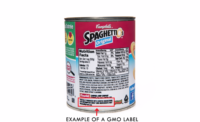Legs to Stand on
By Andy Hanacek
Standup pouches are becoming a more popular packaging option as materials and equipment to manufacture them improves.
When trying to sell your product, differentiation is the name of the game. In the realm of form/fill/seal bagging applications, it takes more than splashy graphics and a nifty name to get a product noticed on the shelves.
That’s why snack manufacturers and bakeries are asking their products to “stand up” and be noticed on the shelves, and bagging equipment and materials suppliers are heeding the call.
Standup pouches are quickly infiltrating the snack and bakery aisles, spurred on by successful entries into other supermarket areas, including the coffee grounds sector.
And although the road bringing standup pouches to these industries hasn’t been speedbump-free, interest is growing in the snack and bakery arenas, says T. Ross Long, vice president of Kliklok Woodman.
“Conventional vertical form/fill/seal [VFFS] packaging machines initially addressed this interest with ‘flat bottom,’ or deeply gusseted pouches that typically featured a gable top,” Long explains. “Further differentiation was achieved with heat-sealed edges or a distinct creasing of the pouch edge to give the effect and stability of a flexible carton. We see a rapid acceleration in new innovative approaches to producing the standup pouch on VFFS systems.”
Long says that in response to the greater demand for standup pouches, Kliklok Woodman, among other companies, is working to refine a pouch that closely resembles the classic “Doyen” pouch traditionally produced on horizontal equipment.
Bob Fritz, vice president of operations at TNA Robag, says that TNA works hard to be quick to market with solutions for new packaging applications that become popular, and that TNA’s Pillow Pack options have helped spur on the rise in popularity of the standup pouch.
“We work closely with marketing groups as [packaging] formats evolve,” Fritz says. “Because TNA is the designer and manufacturer of packaging systems, we ensure these new formats and options can be used not only on new but existing systems.
“This new style of packaging will be mainly consumer-driven and appears to be getting a lot of attention, especially in high-end and premium products.”
Of course, it’s not just about the machines that make standup pouches. Christopher Voght, product manager, Torayfan Division, Toray Plastics (America), Inc., says that his company is pushing to drive down the cost and drive up the quality of the flexible films used to make the standup pouches.
“Traditional standup pouches … are typically made of tri-laminations using a print web, a barrier web, and a sealant web in order to deliver all the required functionality,” Voght says. “In order to drive out costs, Toray has looked at developing films that will allow converters and food manufactures to take this three-ply lamination down to two plies.
“By creating films that serve more than one purpose — such as a barrier web with integrated sealant with zipper stock compatibility — two webs can be replaced with one.”
But the biggest challenge in materials has been creating films that can actually “stand” on their own and hold their shape. Voght says that Toray is offering several cost-beneficial products for manufacturers who want to use standup pouches for their products, particularly those that can be resealed or closed up.
“Toray has created a new metallized, heat-sealable [polypropylene film] that has zipper stock compatibility with some of the leading zipper manufactures,” he says. And for those searching for the right film for their standup pouch, Voght says that Toray has also created stiffer films that can deliver the stiffness required for such a pouch, but in thinner, lower cost films.
As Toray works to reduce the cost of materials needed to make the pouches, equipment suppliers are trying to keep up with the trends in packaging.
Fritz points out that insertion of promotional items into the bags has gained popularity and is something TNA is addressing. Aside from developing specialized equipment to handle the wide range of products that customers want to put in pouches, TNA has continued to push the envelope.
“All manufacturers are looking for the perfect bag,” Fritz adds. “TNA will continue to work with manufacturers to increase the quality, efficiency and speeds at which they are produced.”
Kliklok Woodman also is working on keeping much of its current equipment able to be retrofitted to future standup-pouch applications. Long says that there is a lot of development activity in the flexible packaging arena, but that the end-user flexibility and choice will drive the popularity of this type of packaging.
“Current standup packages produced on VFFS systems will need to be able to be produced in a wider size range and at increasingly competitive speeds to traditional pillow pouches or standup pouches produced on horizontal equipment before they become commonplace,” Long explains. “We believe there is also room for improvement with respect to the finished pouch ‘base’ and repeatability of bag appearance.”
Although the art of making the standup pouch isn’t a science just yet, snack and bakery operators seem willing to give the demand for this style of packaging the legs it needs to stand on.





